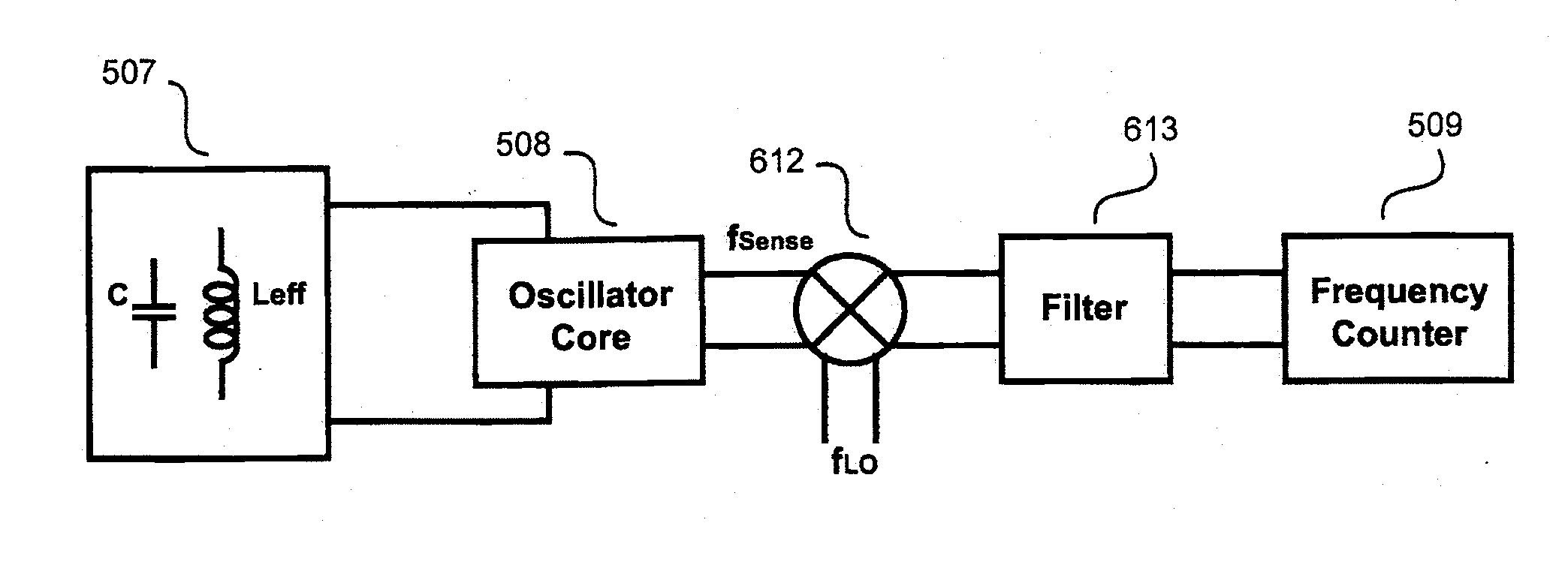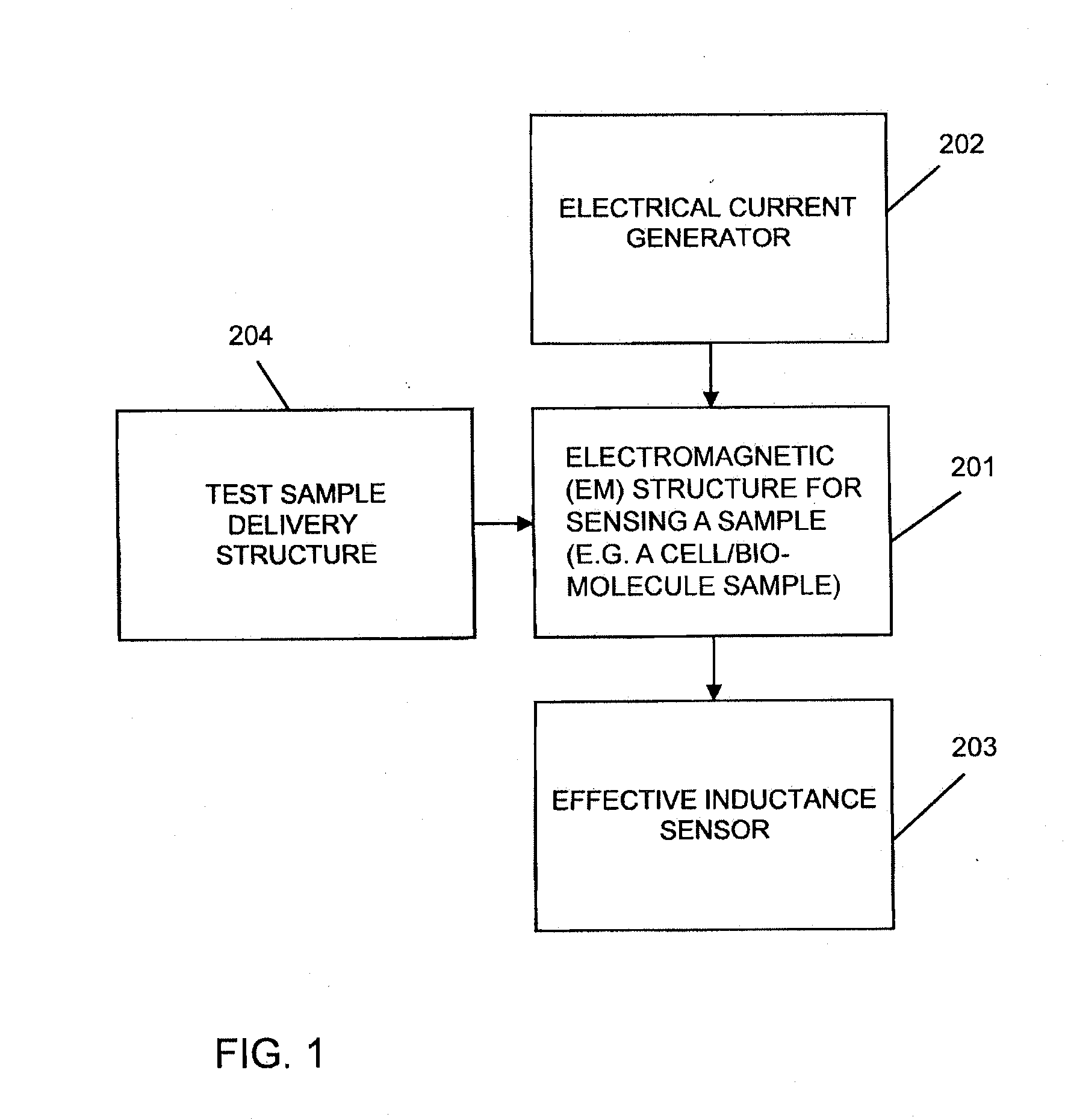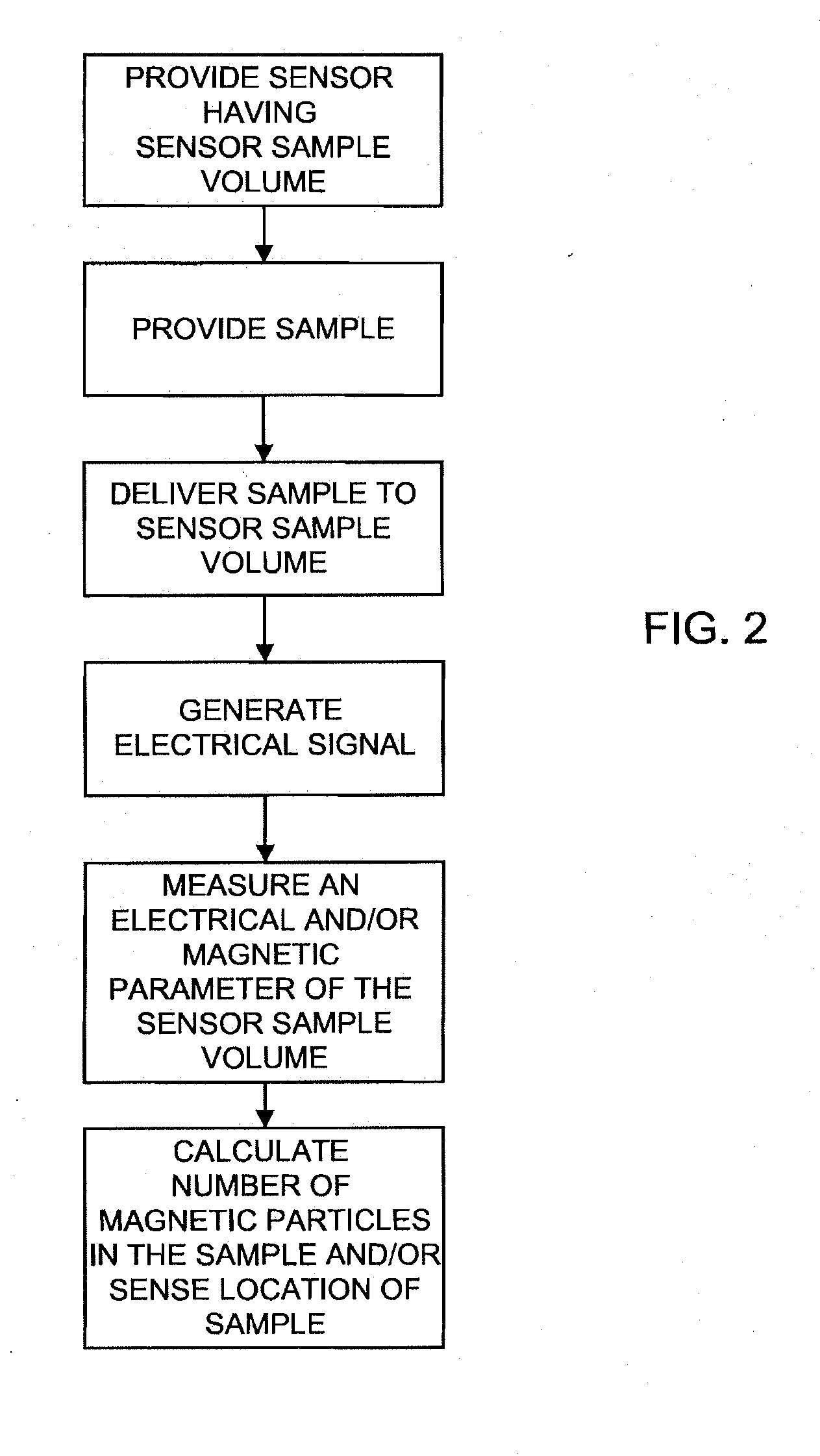Effective-inductance-change based magnetic particle sensing
- Summary
- Abstract
- Description
- Claims
- Application Information
AI Technical Summary
Benefits of technology
Problems solved by technology
Method used
Image
Examples
implementation example
[0112]Two experiments using laboratory test setups of two embodiments of a magnetic particle sensor based on the sensing mechanisms as described above are now described. An LC resonator (as described in section III above) was used as the sensor core. A low noise Colpitts oscillator was built based on a resonator, and the sensor was powered at 4.5V by 3 AA batteries. Thin-film technology was adopted to fabricate both the circuit board and the inductors. FIG. 12 shows an illustration of the sensor circuitry. FIG. 13 shows a schematic diagram of the magnetic particle sensor based on Colpitts LC oscillator. Inductor Ls is used as the sensing inductor. Together with C1 and C2, inductor Ls forms the resonator of block 507 in FIG. 5. Transistor T1 forms the oscillator core as block 508 in FIG. 5. R1, R2, Re, Lc are present for biasing purposes, while C3 and C4 are used for coupling and bypass purposes. An off-the shelf model 53150A HP frequency counter was used for frequency counting as bl...
experiment 1
[0113]Experiment 1 demonstrated magnetic particle sensing without a micro-fluidic channel. The objective of this experiment was to test the functionality of the sensor in an open environment condition (without a fluidic channel). FIG. 14 shows a flowchart of the experimental procedures used to perform experiment 1. The surface temperature of the chip rises during operation of the sensor. This thermal effect, together with the open environment, induces fast vaporization of the DI water in the magnetic particle solution. Note that the baseline measurement (frequency counting on f2) and the target measurement (frequency counting on f1) together with its sample delivery can be interchanged in time. Therefore, the recorded frequency f1 and f2 corresponds to an oscillation frequency of dried beads in the inductors and an oscillation frequency with a dried inductor surface, after achieving the thermal steady-state. The sensitivity can be further defined by Eq. 4:
Δff=f2-f1f2(Eq.4)
[0114]FIG....
experiment 2
[0115]Experiment 2 demonstrated magnetic particle sensing using a micro-fluidic channel. The objective of this experiment was to test the functionality of the bio-sensor in an enclosed aqueous condition. A microfluidic channel together with pneumatic control valves were fabricated in a poly-dimethylsiloxane (PDMS) material. The microfluidic channel and pneumatic control valves were used to deliver magnetic particle samples to the sensor, as well as to form a sensing chamber. The sensing chamber substantially prevented vaporization of the DI water during detection. FIG. 18 shows a flowchart of the experimental procedures used to perform experiment 2. Note that the baseline measurement (frequency counting on f4) and the target measurement (frequency counting on f3) together with its sample delivery can be interchanged in time. As in experiment 1, the surface temperature of the chip rises during operation of the sensor.
[0116]During an operational mode of the sensor, the DI water was pr...
PUM
 Login to View More
Login to View More Abstract
Description
Claims
Application Information
 Login to View More
Login to View More - R&D
- Intellectual Property
- Life Sciences
- Materials
- Tech Scout
- Unparalleled Data Quality
- Higher Quality Content
- 60% Fewer Hallucinations
Browse by: Latest US Patents, China's latest patents, Technical Efficacy Thesaurus, Application Domain, Technology Topic, Popular Technical Reports.
© 2025 PatSnap. All rights reserved.Legal|Privacy policy|Modern Slavery Act Transparency Statement|Sitemap|About US| Contact US: help@patsnap.com



